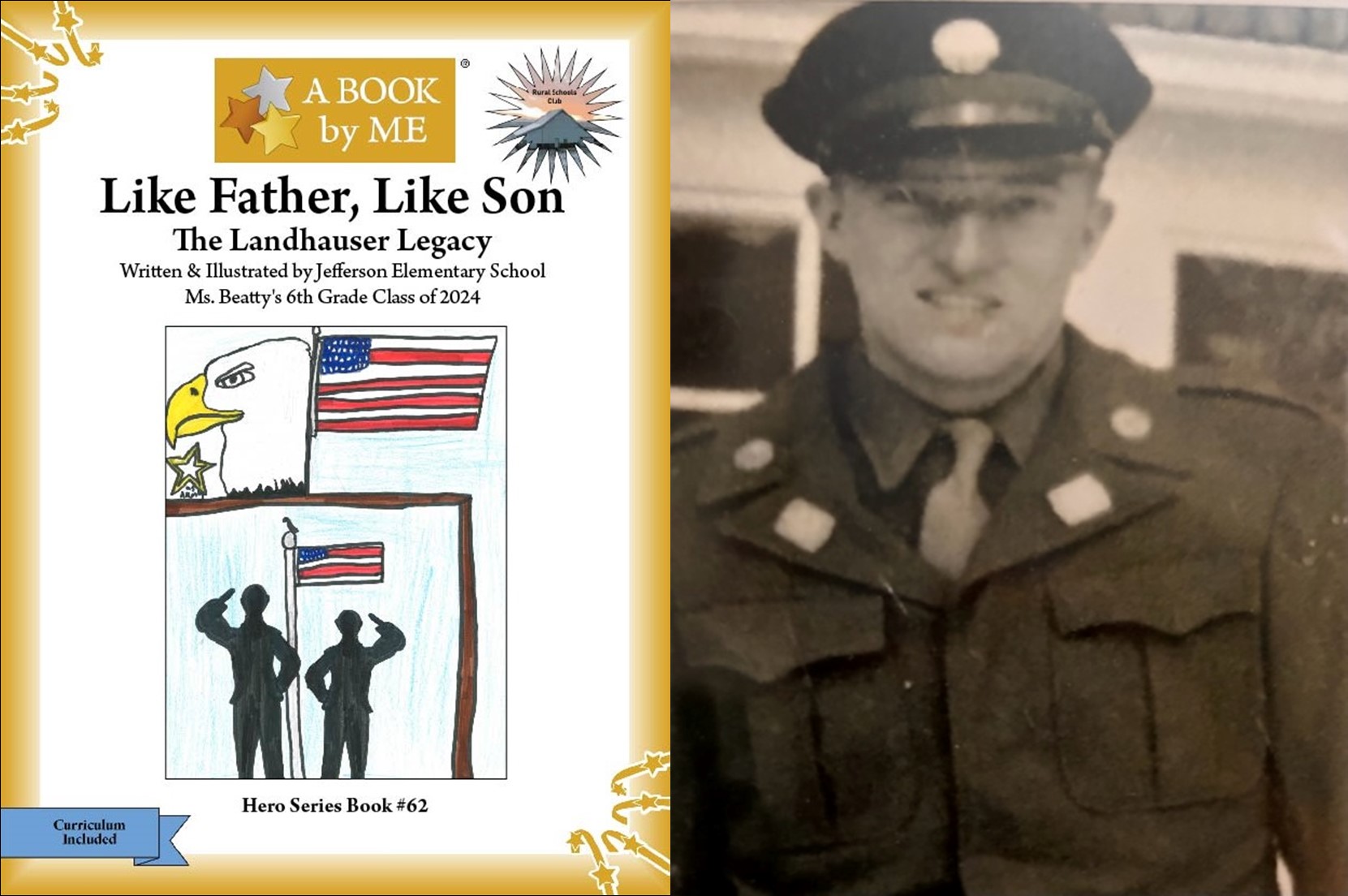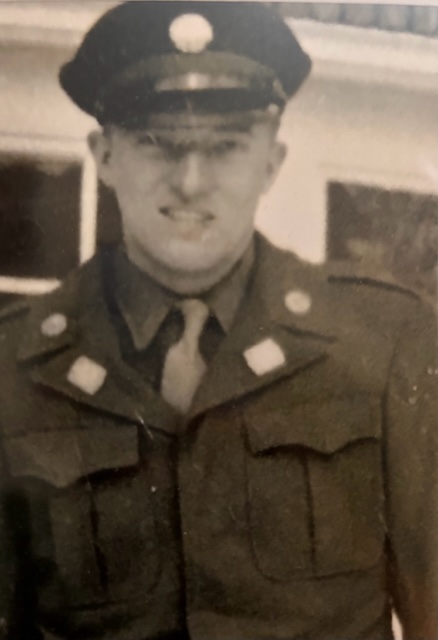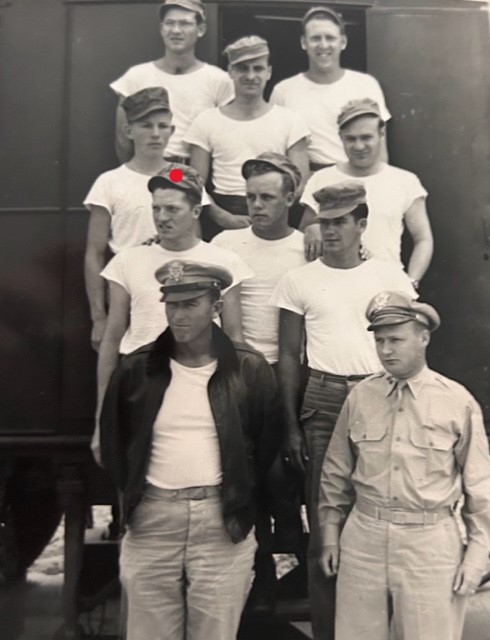Like Father, Like Son
The Landhauser Legacy
Written and Illustrated by Jefferson Elementary School, Ms. Beatty's 6th Grade Class of 2024 - Muscatine, Iowa
A BOOK by ME - True Stories Written by Kids for Kids
A mutual friend introduced me to Ileen Landhauser whose husband Jim had an important role during WWII serving in the manufacturing area. After the war, Jim collected data and tracked aircraft with the newly developed Radio Detection and Ranging equipment, which was coined “radar” by the U.S. Navy. It was new technology at the time and there was much to learn about it. Radar was originally developed by the British during World War II. It became an invaluable tool for the Allied forces and still is used today in many ways.
I learned Jim’s brave father Joseph had come to America as a teen looking for a better life in the early 1900s. In exchange for citizenship, he was asked to serve in the U.S. Cavalry. Soon the Spanish-American War broke out and led to the creation of five new cavalry regiments to handle the large territory. Joseph was part of that and it’s a war story like I’d never heard before. Not straight from the horse’s mouth in typical A BOOK by ME fashion, but from the son’s mouth who came armed with a front page newspaper article written about Joseph’s service to our country. We added a QR code on the inside front cover of Jim’s book leading to it because of its great educational value.
Initially, I met with Jim twice quickly because his health was failing. I wanted to write and have him approve the two page biography for the back of the book. After Jim passed, I met with siblings who wanted to take on the writing project but soon learned their schedules wouldn’t allow it. That happens sometimes and my search continued. I found a teacher in Iowa looking for a class project. The kids met Ileen at the military museum on the island where both Jim and Joseph worked. It was special since there were sections for each of their stories within that museum and it, along with meeting Jim’s widow, brought the story to life in an important way for the kids.
These ordinary students honored the sacrifices made by two men, father and son. Stories very different but the same inasmuch as they defended the freedoms we still enjoy today. Ileen is so proud of these student’s work, she could bust. Hands-on learning like this is important in many ways including the joy of discovery as they dig deeper, retention and the importance of collaboration.
Deb Bowen
Executive Director Understanding Works
“Our story is about Jim Landhauser who was a WWII Veteran and his father, William, who came to America all alone for a better life at age 16. Both served our country and were stationed at Rock Island Arsenal in the Quad Cities. Our class was able to take a trip to the Rock Island Arsenal Military Museum on Arsenal Island. There, we learned more about making saddles for the Cavalry in William’s long-ago days and about Rosie-the-Riveter workers during WWII when Jim served as their foreman. We enjoyed meeting Jim’s widow when she came to meet us at the museum. We got to hear his voice through her.”

Students at Jefferson Elementary, Muscatine, Iowa 6th Grade Class 2024
James W. Landhauser
Rock Island Arsenal, U.S. Air Force
William Joseph Landhauser was sixteen years old when he immigrated from Switzerland to the United States in the early 1900s. He was on his own, so young William joined the U.S. Cavalry because his service would assure him citizenship. The Cavalry had been organized in 1861 to protect immigrants moving westward. It made sense to have men mounted on horses, since soldiers on foot would have little success in the vast areas of the west. By the time the Civil War began in 1861, there were many in the Cavalry ready to fight for the Union.
- James W. Landhauser
- Jim Landhauser service picture
A revolutionary named Pancho Villa was determined to keep the spirit of rebellion alive in Mexico. Villa also turned against the United States in January 1916, kidnapping and slaughtering 18 Americans traveling on a Mexican train. Weeks later, Villa led his army across the border for a brutal raid against the small town of Columbus, New Mexico, where he and his men killed 19 more people and left the town in flames. President Wilson ordered General John Pershing to lead American troops into Mexico to capture Pancho Villa. For almost two years, Pershing’s soldiers chased Villa on horseback, in automobiles and with airplanes. He was elusive and they were not successful. When World War I started, General Pershing received orders to move on to that bigger battle in Europe.
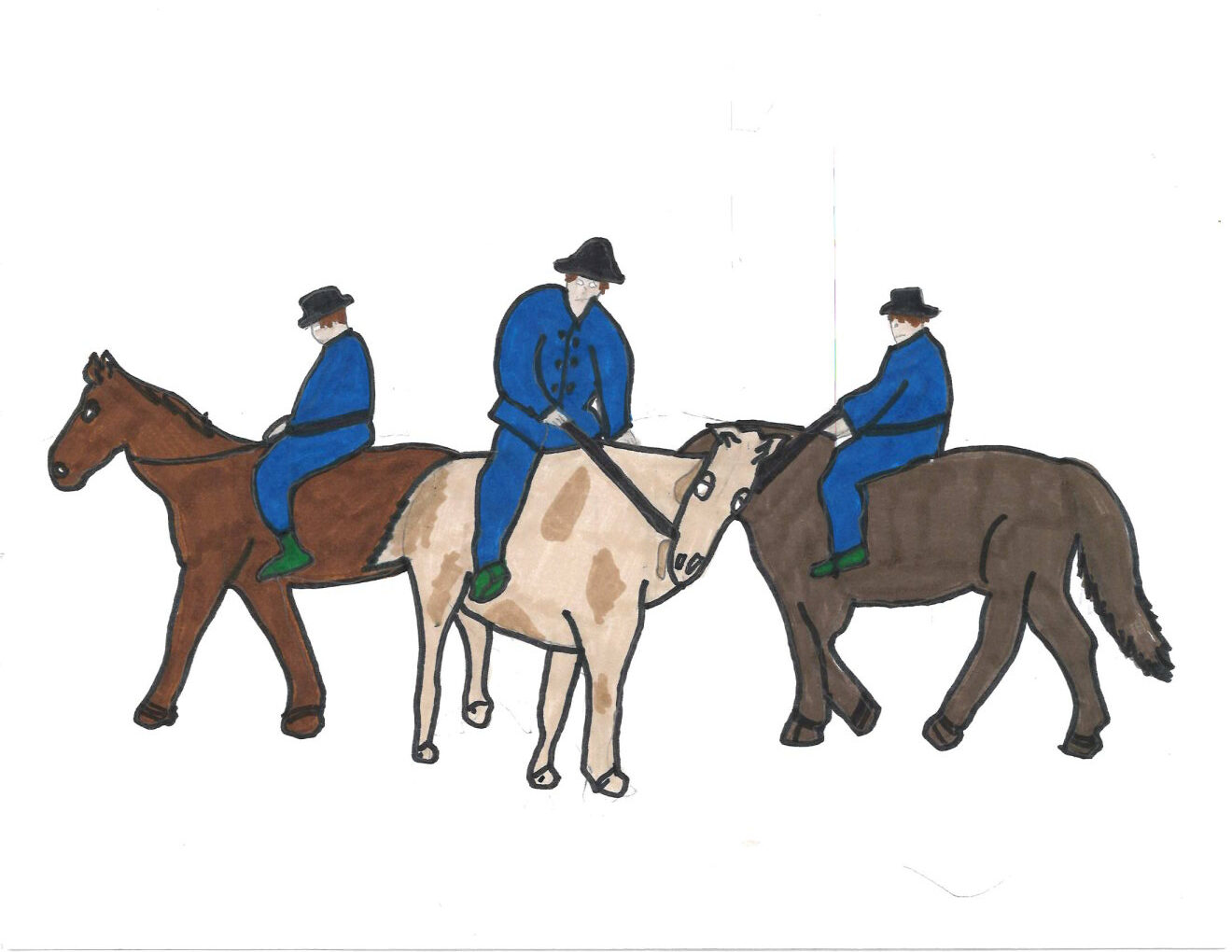
After his service in Mexico, William was sent for training at Rock Island Arsenal to learn to make saddles. While at a picnic, he met a young lady named Adelade Often, and they married in 1919. Their first child was born in 1924, a son they named James (Jim). Two little girls would soon join their family as well. William got a job as a chauffeur for E.P. Adler, a newspaper man in Davenport, Iowa. His job was secure during the Great Depression, and his job came with housing. William and his family lived in an apartment above the Adler’s garage. Because Adler was a very successful businessman, he traveled often, and since he didn’t drive, William went with him as his chauffeur. On a trip to Colorado, William mentioned to his boss that he could take his whole family on a trip on what he was paying for lodging. That’s how E.P. Adler agreed that the entire family could come on the annual trip to Colorado. Not very many families were able to travel during the Depression, but circumstances allowed the Landhauser’s to travel and have adventures.
Jim remembers when the Japanese bombed Pearl Harbor and when America went to war. Like father like son, he worked at the Rock Island Arsenal. Established as a fort on an island (known as Rock Island) in the middle of the Mississippi River, the Arsenal was part of a chain of frontier defense posts established after the War of 1812. In 1832, Rock Island became the logistics headquarters for the U.S. Army during the Black Hawk War. Three future presidents fought in that war: Abraham Lincoln, Zachary Taylor and Jefferson Davis.

The fort was not used for years after that but was retained as a federal reserve. Then in 1862 the abandoned fort was re-designed as Rock Island Arsenal, and ground was broken for the first building. Today more than 6,000 military, civilian and contractor personnel work on Arsenal Island.
As a civilian, Jim worked at the Rock Island Arsenal as an Assistant Line Foreman. During World War II, the Arsenal was famous for artillery production. Approximately 600 artillery cartridges were made each month throughout the war, and 30 caliber machine guns were produced. Jim’s workers packed the machine guns and artillery in crates so they could be shipped off to the soldiers in the field in Europe and in the Pacific. Many of the workers at the Arsenal were women, since there was a shortage of men. Later those women who stepped up would be called Rosie the Riveters. One day at work, a forklift accidentally ran over Jim’s foot. His job was essential and he couldn’t drive because of the foot injury, so his boss provided transportation back and forth to work.
During WWII, over 14,500 Italian POWs resided in camps throughout the United States. When Italy agreed to join the Allied Powers in October 1943, the U.S. developed a program that would allow captured Italian soldiers to assist with the American war effort. Many of those prisoners were held at Rock Island Arsenal, and some worked with Jim. One, an artist, became Jim’s friend. He sketched an amazing likeness of Jim and also made him two handcrafted rings.
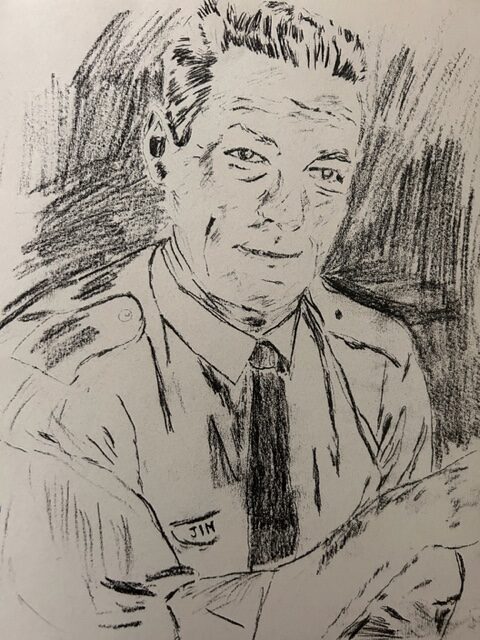
Sketch by Italian prisoner of war who Jim befriended at Rock Island Arsenal where prisoners were housed
Three years later the war ended, and men were coming home from the war. In 1946, Jim got an important letter in the mail. It was from Uncle Sam telling him he was drafted. He joined the U.S. Air Force and traveled to San Antonio, Texas for basic training. While he was there, he often received letters from E.P. Adler with a $5 bill inside. Mr. Adler, for whom he served as chauffeur, was the only person who called him “Jimmy”.
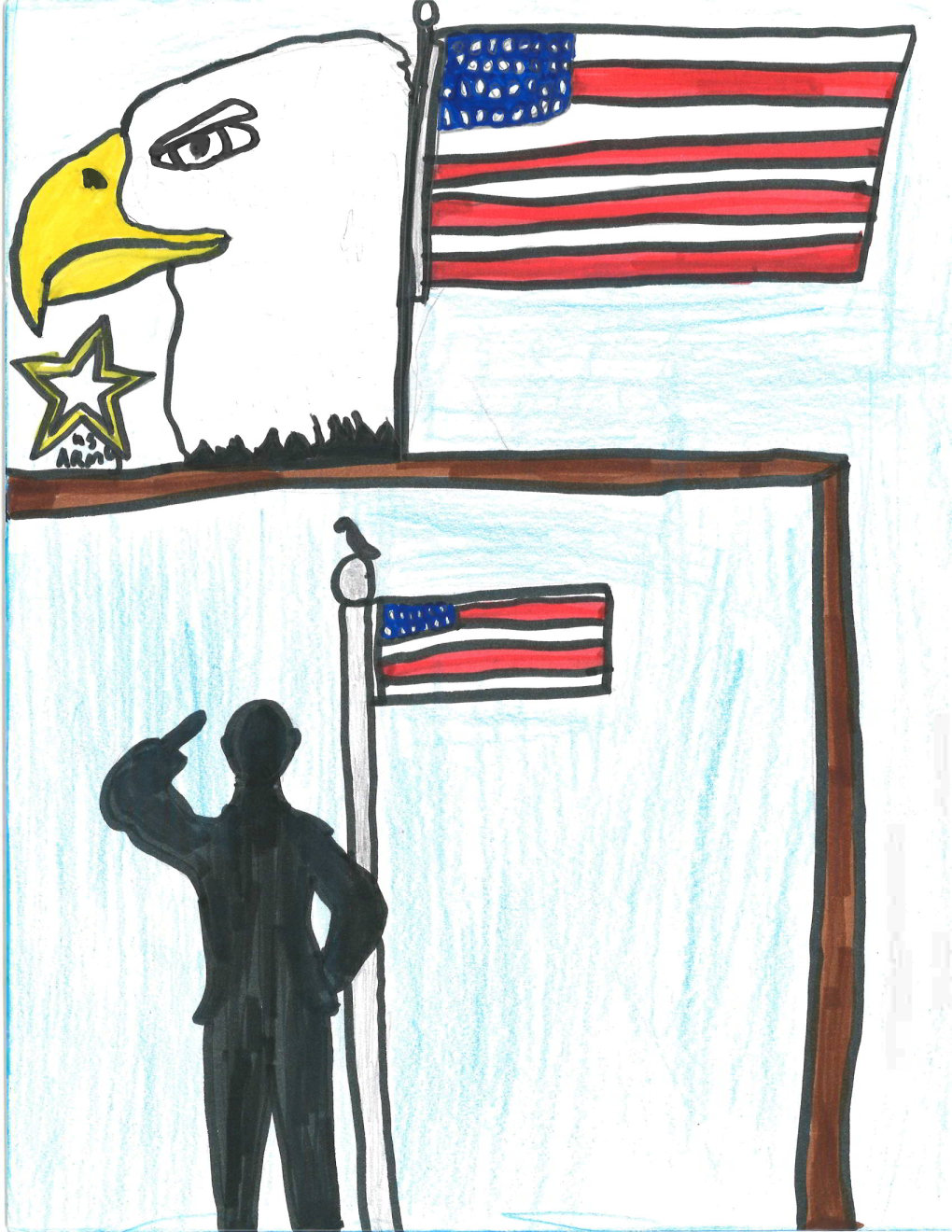
Afterward, Jim was sent to Salton Sea in California and then to Boca Raton in Florida, where the Army Air Corps chose to move its technical school. There, Jim would collect data and track aircraft with the newly developed Radio Detection and Ranging equipment, which was coined RADAR by the U.S. Navy in 1940. It was the newest technology at the time and there was much to learn about it. Originally developed by the British during World War II, it became a valuable tool for the Allied forces.
After his service, Jim came home and got a job at the new Alcoa aluminum plant along the Mississippi River in Riverdale, Iowa. He got in on the ground floor of this business and worked there for 37 years as an overhead crane operator.
In 1953, Jim married Jane Denger, who worked at Alcoa with him. Together they raised their children named Gary, Mark, and Susan. Jane passed away in 1980. Five years later, he married a widow named Ileen Richardson-Hesse, who had two children named Chip and Barbara. All together they have nine grandchildren and sixteen great-grandchildren.
Read an article about Landhauser’s experience in the Mexican Border War.
 Like Father, Like Son: The Landhauser Legacy
Like Father, Like Son: The Landhauser Legacy
William Landhauser, immigrated alone to the U.S. at 16 and joined the U.S. Cavalry in order to qualify for citizenship. He served during the Mexican-American War from 1846 to 1848, a conflict over vast territories in the American West. Later, his son James Landhauser played an important role in another war, WWII. Here is the story of two generations of heroes, their stories preserved by nine students at Jefferson Elementary School in Muscatine, Iowa.
A BOOK by ME, a book series developed by Deb Bowen, empowers students to preserve history by telling the story of unsung heroes in our communities. For the young participants, it’s a guided cross-curricular project that gathers stories of people who do amazing things but have received little or no recognition. Students learn how to publish a picture book that is a primary source document with photographs and a biography.
Since 2003, Deb Bowen has been arranging meetings between students and individuals from the WWII generation. This intergenerational storytelling results in unique storybooks written and illustrated by kids for kids in the A BOOK by ME series. More about Deb Bowen >

